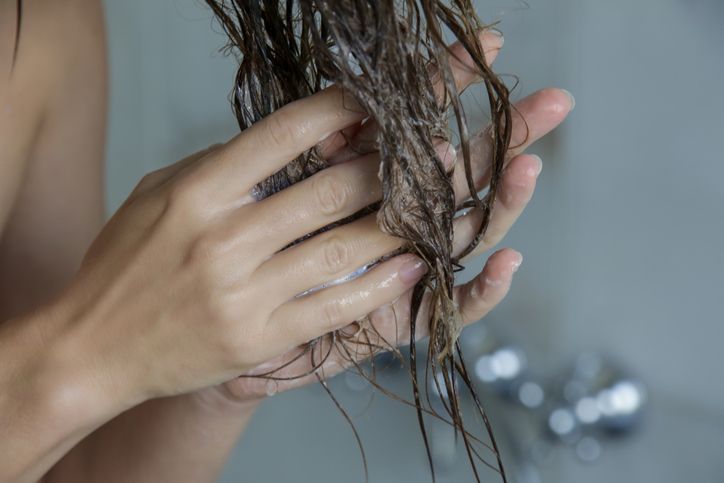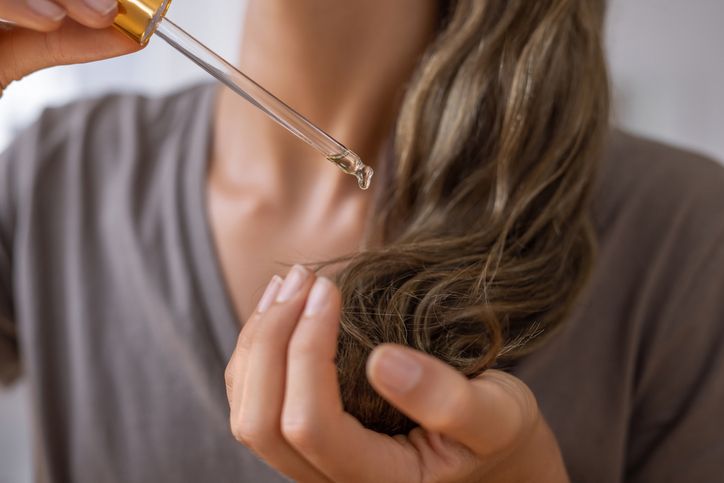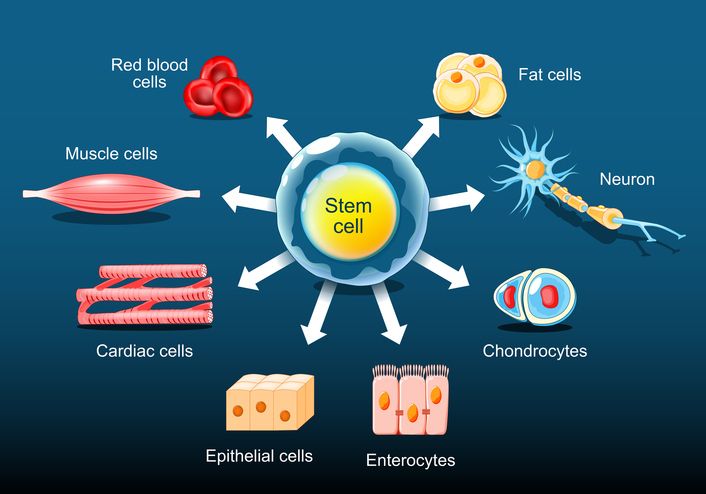
Author: Natalie Ng|Updated: 15 May 2025
Not sure if you’re just shedding or actually losing hair? You’re definitely not the only one asking that. Hair falls out every day as it’s part of the normal hair growth cycle. Yet, when it starts feeling like way too much, it’s easy to wonder what’s really going on. There’s a difference between regular hair shedding and real hair loss, and spotting it early can make a big difference. Maybe you’ve noticed more hair in your brush, a receding hairline, or areas that look a bit thinner than usual. Maybe your strands just feel finer, or your scalp’s getting easier to see. These changes can mean a few different things, depending on what’s causing them. Hair shedding vs hair loss isn’t always black and white, but there are some clear signs that can help you figure it out. If you’ve been dealing with more hair falling than usual and want to get to the bottom of it, keep going. These six clues can help you tell what’s normal and what might need a closer look.

Hair Thinning Patterns Show the Type of Hair Loss

Common signs in male and female pattern hair loss
Hair thinning often follows a pattern, and that pattern gives clues about what’s causing the hair loss. In male pattern baldness, hair starts to thin around the temples and crown, creating a receding hairline or an “M” shape. In female pattern hair loss, the thinning spreads more evenly across the top of the scalp, but the hairline usually stays in place. Both types are linked to androgenetic alopecia and involve changes in the hair follicles and growth phase.
Sudden patches or widespread shedding
Patchy bald spots that show up without warning could be caused by alopecia areata. These small, round areas of noticeable hair loss can affect any part of the scalp. If the thinning feels more even and doesn’t follow a clear pattern, it may be telogen effluvium. This is usually triggered by a stressful event, intense illness, or hormonal imbalance, and causes excessive shedding across the whole scalp.
Why patterns are important
Each type of hair loss affects the scalp differently. Recognising whether you’re seeing overall thinning, bald patches, or a receding hairline helps point to the cause—whether it’s part of the normal hair shedding process or something like excessive hair shedding, hereditary hair loss, or scarring alopecia. Tracking the pattern helps guide treatment and shows how it may affect hair regrowth or overall hair density.

Daily Hair Count Tracks Shedding Trends
Normal range of daily hair shedding
Losing between 50 to 100 strands a day is part of the normal hair growth cycle. This happens when older hairs reach the end of their life cycle and naturally fall out, making room for new growth. You’ll often notice this during brushing, washing, or even when running your hands through your hair. As long as your hair density stays the same, this level of shedding is expected and healthy.
Why tracking helps spot increased hair shedding
If you’re dealing with more hair falling out than usual, a daily count gives you a clearer view of what’s changing. While normal hair shedding stays within the same range, excessive hair shedding or a sudden shift could point to telogen effluvium, hormonal imbalance, or even early signs of hereditary hair loss. Tracking helps tell the difference between temporary shedding and more serious hair loss.
How to count with a brush
Use the same clean brush each time, ideally once a day after detangling. After brushing, remove the loose hairs and count them. Try to do this at the same time daily—when your hair is dry and styled the same way—so the numbers stay consistent. This simple habit builds a baseline for what’s normal for you.
What else to log
Write down more than just numbers. Note if you’ve changed your diet, gone through a stressful event, started a new medication, or used more heat styling. All of these can affect hair follicles and influence the shedding phase. Keeping track of lifestyle changes helps connect the dots between external triggers and increased shedding.
Weekly tracking makes trends clear
Instead of worrying about one high number, look at your log across several days. Is there a steady increase in hair shedding? Has the average count changed compared to previous weeks? Tracking by week helps highlight patterns that daily notes might miss—and gives clearer insight into whether your hair shedding is within the normal range or moving toward noticeable hair loss.
Book Now to Experience
F8 Hair Regrowth Treatment
1 Minute Self-Registration
Date should not be before minimal date

Scalp Coverage Reflects Changes in Hair Density
Increased scalp visibility signals hair thinning
If your scalp is becoming more visible through your hair—especially at the crown, part line, or temples—it often points to hair thinning rather than normal hair shedding. These areas tend to show early signs of female pattern hair loss or male pattern baldness. Visibility tends to increase gradually, so small changes can be easy to miss.
Hair density comparison using photos
Old photos are useful for spotting shifts in hair density. Compare past images taken in similar lighting to more recent ones. Look at how much of your scalp is showing, especially in areas that used to look fuller. If your part looks wider or more skin is showing in general, it may be due to excessive hair shedding or reduced new hair growth.
Simple ways to examine scalp coverage
Stand under bright light or use a handheld mirror to check areas like your crown and the back of your head. These are often the first places to show reduced hair fullness. Wet hair also reveals thinning more clearly. If you’re seeing more scalp through damp hair, it may suggest changes in the normal hair growth cycle or early signs of hereditary hair loss.
Differences between temporary shedding and permanent loss
Shedding from stress or seasonal changes tends to bounce back quickly. If scalp visibility stays the same or gets worse over time, it may point to androgenetic alopecia or another type of progressive hair loss. These conditions affect the hair follicles directly, limiting their ability to produce thicker strands during the anagen phase.

Disruptions in the Hair Growth Cycle
Signs of an interrupted growth phase
Your hair doesn’t grow all at once. Each strand moves through its own timeline made up of three phases: anagen (growth), catagen (transition), and telogen (resting). After the resting phase, the strand sheds and makes room for new hair. This natural cycle keeps your overall hair density stable during normal hair shedding.
When that cycle is disrupted—like more strands entering the telogen phase too soon or staying there too long—it slows down hair regrowth. You’ll start to notice less fullness, and the rate of hair falling may increase without new strands replacing the lost ones.
Causes behind cycle disruption
Disruptions can be triggered by a range of factors, including intense stress, hormonal changes, nutritional deficiencies, or illness. In many cases, telogen effluvium is the result. This condition causes large numbers of hairs to shift into the resting phase at once, leading to noticeable hair loss across the scalp.
In other cases, conditions like androgenetic alopecia change how long the anagen phase lasts, leading to thinner hair and gradual thinning over time.
Difference between shedding and cycle imbalance
With normal shedding, the cycle keeps running smoothly—new hairs grow in as others fall out. But when you notice fewer new hairs growing in the areas where you lost volume, it’s likely a sign of cycle imbalance rather than typical hair shedding. Tracking changes in regrowth helps reveal whether you're seeing temporary shedding or signs of permanent hair loss.

Recovery Time After Washing Shows Hair Resilience

Scalp and follicle response post-wash
Your hair is at its most sensitive right after washing. This is when the scalp resets and natural oils begin moving back down the hair shaft. During this time, the hair follicles can also react to any recent damage or stress, making this recovery period a good way to observe overall hair health.
What changes after washing reveals
If you’re experiencing hair shedding, you might notice more loose strands during or right after a wash. That’s normal, as hairs already in the telogen phase often release with friction and water. But what happens after that is more telling. Healthy hair returns to its usual volume within a day or two. If it stays limp, weak, or feels noticeably thinner even after drying, it could point to excessive hair shedding or early signs of hair loss.
Extended recovery time may signal shedding issues
Hair that takes longer to return to its normal fullness—especially if shedding increases after each wash—can reflect issues like telogen effluvium, hormonal imbalance, or the effects of harsh chemicals and excessive heat styling. These factors can weaken the follicles and interfere with the anagen phase, leading to reduced regrowth and overall thinning.
Adjusting routine supports recovery
Spacing out washes gives your scalp more time to balance oil production and strengthens hair follicles. Reducing manipulation during this time also helps limit mechanical damage. If you’re seeing signs of delayed recovery or increased hair falling after each wash, it may be time to review your routine or speak with a professional about possible causes.
Book Now to Experience
F8 Hair Regrowth Treatment
1 Minute Self-Registration
Date should not be before minimal date

Changes in Hair Thickness and Texture Show Underlying Loss
Thinner strands can signal progressive loss
If your hair feels finer than it used to, this may be more than just seasonal shedding. Hair strands that become thinner over time—especially in specific areas—can point to miniaturization, a process where hair follicles shrink and produce weaker, finer hair. This is common in both female pattern hair loss and male pattern baldness.
Texture changes during early loss
Hair that once felt full and strong may start feeling softer, flatter, or less textured. These changes often happen slowly and are easy to miss unless you’re actively checking. Comparing how your hair feels now to past photos or old strands can help reveal whether it’s just natural variation or a sign of hair loss.
Simple ways to assess strand width
Roll a single dry strand between your fingers. If it feels noticeably thinner than it used to—or if your ponytail has lost bulk—it may be a sign of reduced hair thickness. You can also check for changes in the spacing of strands, especially at the crown or along your part, where reduced volume tends to appear first.
When thickness change points to hair loss
Unlike hair shedding, which doesn’t affect strand width, hair loss often leads to visible thinning and changes in texture. This happens when the hair growth cycle is shortened or when hair follicles stop producing thick strands altogether. These shifts often occur in conditions like androgenetic alopecia, scarring alopecia, or from long-term use of harsh chemicals and tight hairstyles.

Common Triggers Behind Increased Hair Shedding
Physical and emotional stress
One of the most common reasons for increased hair shedding is a stressful event. This can include anything from surgery, illness, or sudden weight changes to emotional stress. These situations can shift more hair into the telogen phase at once, causing hair to fall out evenly across the scalp—a pattern typical of telogen effluvium.
Hormonal changes
Shifts in hormone levels can directly affect hair follicles and disrupt the natural hair growth cycle. Conditions like thyroid imbalance, pregnancy, menopause, or starting or stopping birth control can lead to noticeable hair loss or excessive shedding. These changes may also slow down hair regrowth or reduce hair thickness.
Nutritional deficiencies
Lack of certain nutrients, especially iron, vitamin D, zinc, or protein, can affect hair health. Hair needs fuel to grow, and if your body is low on key nutrients, it might prioritize other systems—leading to thinner hair or slower growth. This type of shedding can usually be reversed once the deficiency is corrected.
External damage from styling and products
Excessive heat styling, frequent bleaching, or using harsh chemicals can weaken your strands and damage the hair shaft. Over time, this can lead to breakage that mimics shedding or even trigger traction alopecia if tight hairstyles are worn repeatedly. Damage may also make your hair appear thinner, even if the follicles are still active.
Medical conditions and medications
Some medications—including those for high blood pressure, depression, or autoimmune disorders—list hair loss as a possible side effect. In other cases, conditions like alopecia areata or scarring alopecia can lead to patchy bald spots or permanent hair loss if not addressed early. If you’re experiencing unusual hair thinning along with other symptoms, medical evaluation is often needed.

Practical Tips to Prevent Excessive Hair Shedding

Maintain a balanced diet to support hair growth
Your hair needs the right fuel to stay healthy. Iron, vitamin D, zinc, and protein are all essential for strong strands and steady growth. Without these nutrients, the hair growth cycle can slow down, and you may notice increased hair shedding or even thinner hair over time. A diet that supports overall hair health also encourages the anagen phase, helping your hair stay in its growth stage longer.
Use gentle routines to protect scalp health
Daily habits play a big part in how your hair responds over time. Choose mild shampoos that don’t strip your scalp, and avoid products with harsh chemicals. Scalp health affects how well hair follicles function, and damage here can lead to long-term issues like scarring alopecia or reduced hair density. Gentle scalp massages with fingertips can also promote hair growth by improving blood flow to the follicles.
Reduce heat styling and avoid tight hairstyles
Frequent use of flat irons, curling wands, or high heat from blow dryers can weaken your strands and increase breakage. Over time, this can lead to hair thinning or make it harder for hair to regrow. Tight hairstyles like slick ponytails or braids can pull at the roots and trigger traction alopecia, which may cause permanent hair loss if repeated over time. Keep styles loose and give your hair regular breaks from tension.
Minimize stress to protect the natural process
Stress can affect your hair more than you might expect. When your body goes through intense stress—emotional or physical—it can push large numbers of hairs into the telogen phase at once. This disrupts the normal hair growth cycle and can lead to telogen effluvium, causing noticeable hair loss. Finding simple ways to manage daily stress helps protect your natural process and reduces the risk of severe shedding.
Care for your hair while you sleep
Friction from cotton pillowcases can cause small amounts of breakage every night. Switching to silk or satin pillowcases helps reduce tension on the hair shaft. Wrapping your hair or sleeping with it in a loose braid also helps prevent tangling and split ends. These small changes support long-term hair strength and reduce stress on the follicles while you rest.
Book Now to Experience
F8 Hair Regrowth Treatment
1 Minute Self-Registration
Date should not be before minimal date

Support Hair Regrowth with F8 Hair Regrowth Treatment
Targeting the root cause of hair loss
If you’ve been dealing with excessive hair shedding or thinning that isn’t improving, you may want to consider a professional hair and scalp treatment that supports the hair growth cycle directly. The F8 Hair Regrowth Treatment is designed to help address noticeable hair loss, promote healthier hair follicles, and improve overall hair density—without surgery or downtime.
How F8 Hair Regrowth Treatment works
The F8 treatment combines low-energy laser technology with a medical-grade hair growth serum. The laser energy gently stimulates inactive hair follicles and helps improve blood circulation through nearby capillaries. This step encourages nutrient delivery to the roots and strengthens the hair papilla, which plays an important role in producing stronger, thicker strands.
Once the laser step is complete, the serum is applied across the scalp to hydrate, soothe, and improve scalp health. The treatment also helps unclog pores, balance oil levels, and create the right conditions for natural hair regrowth. This makes it especially helpful if your hair thinning is related to blocked follicles, poor scalp condition, or reduced blood flow to the roots.
Benefits for those experiencing hair shedding or hair loss
Whether you’re going through increased hair shedding due to stress, hormonal imbalance, or early signs of female or male pattern hair loss, F8 supports the recovery of the normal hair growth cycle. It’s non-invasive, pain-free, and suitable for both men and women. It also doesn’t require downtime, so you can return to your day right after the session.
Because the treatment focuses on improving both scalp health and follicle activity, it’s a helpful option for people looking to prevent permanent hair loss or support long-term hair regrowth. With regular sessions over a few months, many clients report fuller-feeling hair, better scalp condition, and less hair falling over time.
Take the next step
If you’ve noticed signs of gradual thinning, excessive shedding, or changes in your scalp coverage, the F8 Hair Regrowth Treatment may be a good addition to your care routine. Book F8 now to speak with a professional and find out if the treatment fits your hair goals.
F8 Hair Regrowth TreatmentBook Now to Experience
F8 Hair Regrowth Treatment
1 Minute Self-Registration
Date should not be before minimal date
FAQ
Can hair shedding get worse during seasonal changes?
Yes, increased hair shedding is common during seasonal transitions, especially in autumn. This is due to shifts in the hair growth cycle, where more hair strands naturally enter the telogen phase. While seasonal shedding is part of the normal hair growth cycle, excessive shedding lasting more than a few weeks could signal an underlying issue, such as stress or nutritional deficiencies.
Does excessive heat styling permanently damage hair follicles?
Frequent and intense heat styling can weaken hair strands and lead to breakage, but it usually doesn’t damage the follicles permanently unless combined with other factors like tight hairstyles or chemical treatments. Over time, however, consistent exposure to high temperatures can inflame the scalp and lead to hair thinning or traction alopecia, especially around the hairline. Limiting heat exposure and using heat protection can help maintain healthy hair.
What’s the difference between miniaturized hair and normal thinning?
Miniaturized hair refers to individual strands that become progressively finer and weaker due to shortened growth phases, often caused by androgenetic alopecia. This leads to noticeable hair loss over time. Normal thinning, on the other hand, may result from factors like stress or increased hair shedding and is usually temporary. Miniaturization often requires targeted treatments to promote hair regrowth and prevent permanent hair loss.
Can tight hairstyles lead to permanent hair loss?
Yes, consistently wearing tight hairstyles can cause a condition called traction alopecia. This form of hair loss happens when repeated tension damages the hair follicles over time. If caught early, hair can often grow back once the tension is removed. But if the pulling continues, it can lead to scarring alopecia and permanent hair loss. Avoiding tight styles and giving the scalp time to recover helps maintain overall hair health.
How long does it take to see visible changes in hair density?
Visible improvements in hair density often depend on the cause of hair shedding or loss and how early you start treatment. For temporary issues like telogen effluvium or post-stress shedding, hair may begin to regrow within 2–3 months. For more persistent conditions like female pattern hair loss or hereditary hair loss, noticeable changes may take 4–6 months with consistent care. Supporting the scalp and hair follicles through treatment and proper care helps encourage gradual regrowth.
Recommended Articles
COPYRIGHT© NEW BEAUTY MANAGEMENT LIMITED 2025. ALL RIGHT RESERVED.




